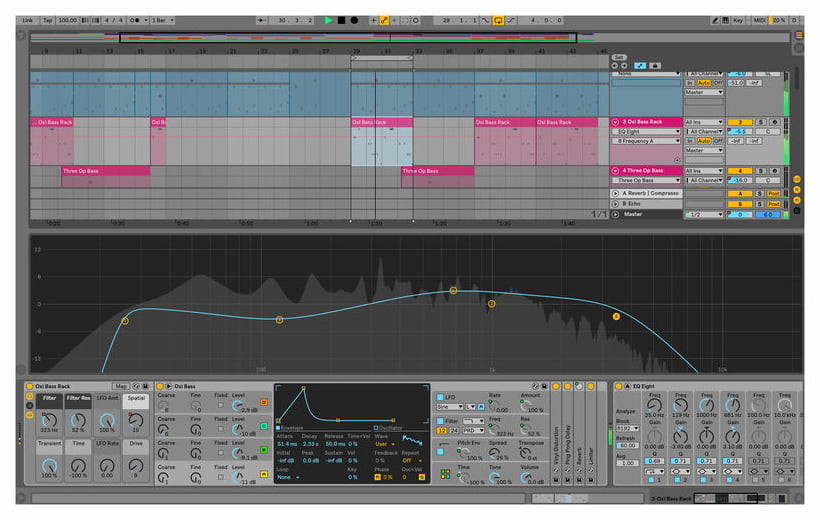

This device will allow any MIDI note to trigger a simple envelope to change the value of any parameter. Use the slider to set the amount of smoothing between randomized values.

The randomization will occur every time a MIDI note passes through the device. Then the white indicator will move around randomly within that range. Turn the bottom dial to set the range of randomization, which is shown as a modulation ring around the top dial. This device allows you to randomize any parameter in Live within a certain range of randomization. Map the parameter by clicking the Map button and then clicking any parameter in Live. Then the top dial can be used to control that parameter. This is supposed to be used as a starting point, then you can alter the probability for individual notes.īy default, the notes will play at the same octave as the initial MIDI note which comes into the device. You can also set the range of octave randomization /. In the Device image, there is a 66% chance that your note will be replaced by a C#, D#, F, F#, G#, A# or B, with various degrees of probability for each note. You can set a particular scale and root note, which will remove the probability of notes which are not in the scale, and put the probability of the scale’s notes at 100% for each. Any notes will trigger a random note based on the probability values you set. Mid way through the Chance Ten line up the Chance Note device will allow you to set the probability of specific notes being triggered by incoming MIDI. The device doesn’t care what the incoming note is. You can also set the probability of 3 velocity modes – level, rising and falling velocity. Again, you can trigger the device by probability, or by using the trigger button. This device will trigger a glitchy stutter/beat repeat effect of your notes. There are probability controls for the speed of the drill and the duration. The transpose amounts can be set within 2 octaves above or below the initial note.Ĩ different specific incoming notes can be given individual alternate probabilities each. For each alternative, you can set the probability level of that note being played. If for example you set it to E3 & an E3 note comes in, probabilities are set for the possibility of that note being transposed by -12, 4, 7, 12, -5, -8 or 24 semitones.

This device allows you to set alternative notes to be assigned to particular MIDI notes. The delayed note distance from the initial note can be set in ms or sync times. Set the probability of any note triggering the device. The slider sets the velocity level of the repeated note. There is also a trigger button to have more hands on control, which works exactly as the above device. When this device is triggered, any incoming note will be repeated.

When the trigger is released the probability will return to the amount previously set. This device lets you set the probability of any note being transposed by the amount you set. If you want more control, there is also a trigger which will transpose all notes when held down. Set the probability of any MIDI notes getting through the device and playing. PD (Preserve Downbeat) Mode will always let any note through which lands on the downbeat of any bar. Play whatever notes you like, or put them into Live’s piano roll, but only a certain percentage of those notes will play through. The Chance Ten Pack begins with Chance Play. Each focuses on using MaxforLive to generate and modify MIDI to bring controlled randomness into your productions. LDM TWENTY is made up of the two most popular MaxforLive pack from LM Designs. This package includes two of our most popular MaxforLive MIDI Packs, Chance TEN & MIDI Filter TEN along with an upgrade to Ableton Live Suite 10 which includes MAxforLive which is essential to use the devices from within the packs!!Ĭheck the prices against the upgrade costs in your account at and you’ll see we’ve discounted the standard price for you as well!


 0 kommentar(er)
0 kommentar(er)
